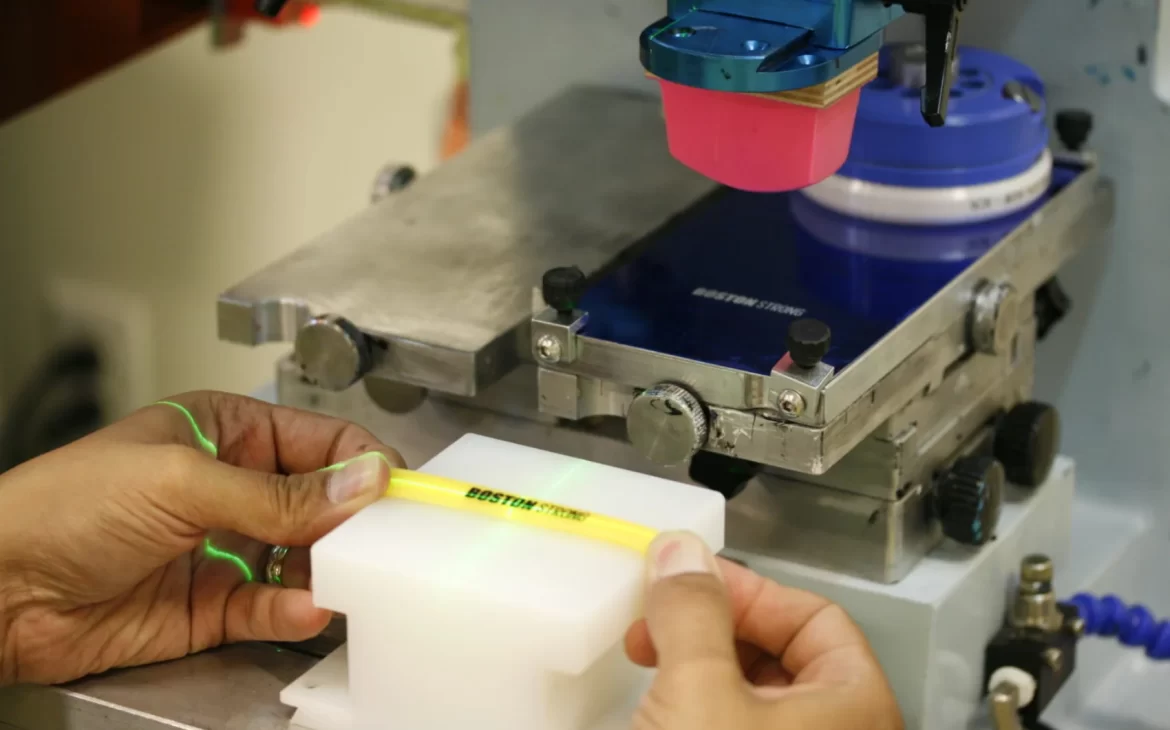Introduction
In the vast realm of printing technologies, one method stands out for its versatility, precision, and ability to decorate even the most complex surfaces – pad printing. This innovative technique has found its application in various industries, from electronics to medical devices, leaving an indelible mark on the products we encounter daily. In this comprehensive blog post, we will delve into the intricacies of pad printing, exploring its history, the mechanics behind the process, and its wide-ranging applications.
Origins and Evolution
The Genesis of Pad Printing
Pad printing, also known as tampon printing, originated in the mid-20th century in Switzerland. The technique was developed to address the challenges of printing on irregular, curved, or textured surfaces that traditional printing methods struggled to handle.
Evolution Over the Decades
Since its inception, pad printing has undergone significant advancements, propelled by technological innovations and a growing demand for high-quality printing on diverse materials. The evolution of pad printing has transformed it from a niche process to a mainstream solution for various industries.
Understanding the Pad Printing Process
Key Components
The Pad
At the heart of the pad printing process lies the silicone pad, a flexible and deformable material that transfers the ink from the printing plate to the substrate. The pad’s composition and quality play a pivotal role in achieving precise and consistent prints.
Printing Plate
The printing plate, often made of photopolymer, carries the image to be printed. Through a series of chemical processes, the desired design is etched onto the plate with remarkable detail and accuracy.
Ink Cup
The ink cup houses the ink and features a doctor blade, which removes excess ink from the plate, leaving only the ink in the etched image. This controlled transfer ensures clean and sharp prints.
The Step-by-Step Process
- Image Preparation: The first step involves creating the desired design, typically in a digital format. This design is then transferred to the printing plate through a photographic process.
- Ink Application: The ink cup covers the etched image on the plate, and excess ink is removed, leaving ink only in the engraved portions.
- Ink Transfer: The silicone pad presses against the plate, lifting the ink from the etched image. The pad then moves to the substrate, transferring the ink with precision.
- Curing: Depending on the ink type, the printed substrate may undergo curing through heat or UV light to ensure adhesion and durability.
Advantages of Pad Printing
- Versatility: Pad printing can be applied to a wide range of materials, including plastics, metals, glass, and ceramics.
- High Resolution: The flexibility of silicone pads allows for intricate designs and fine details, making it suitable for products with complex surfaces.
- Adaptability: It can accommodate various shapes and sizes, from small electronic components to irregularly shaped medical devices.
Applications Across Industries
Electronics and Gadgets
Pad printing has become a staple in the electronics industry for printing on circuit boards, buttons, and casings. The precision of the process ensures that even the tiniest components receive clear and durable markings.
Medical Devices
In the medical field, where sterilization and durability are paramount, pad printing finds applications on instruments, implants, and medical packaging. The ability to print on curved and irregular surfaces makes it an ideal choice for medical equipment.
Automotive Components
The automotive industry relies on pad printing for labeling and branding on various components, including dashboard buttons, switches, and logos. The resilience of pad-printed markings against environmental factors makes it a preferred choice.
Promotional Products
From pens to keychains, pad printing is widely used for promotional products. The process allows for vibrant and lasting prints on a multitude of materials, enhancing the visual appeal of promotional items.
Innovations in Pad Printing Technology
Digital Pad Printing
Advancements in digital technology have influenced pad printing, leading to the emergence of digital pad printing systems. These systems offer enhanced precision, quicker setup times, and the ability to reproduce intricate designs with unparalleled accuracy.
Environmental Considerations
As environmental consciousness grows, manufacturers are exploring eco-friendly ink options for pad printing. Water-based and UV-curable inks are gaining popularity, reducing the environmental impact of the printing process.
Challenges and Future Prospects
Challenges in Pad Printing
Despite its versatility, pad printing faces challenges related to color matching, especially on dark or transparent substrates. Overcoming these challenges requires ongoing research and development in ink formulations and printing techniques.
Future Prospects
The future of printing looks promising with ongoing innovations in materials, inks, and equipment. As industries continue to demand high-quality and customized prints, pad print is likely to evolve further, offering new possibilities and applications.
Conclusion
In conclusion, pad stands as a testament to the marriage of art and science in the world of printing technologies. Its ability to navigate the complexities of diverse surfaces and materials has solidified its place in industries where precision and durability are non-negotiable. As technology continues to advance, the future holds exciting possibilities for pad printing, promising even greater flexibility, environmental sustainability, and expanded applications across various sectors.

